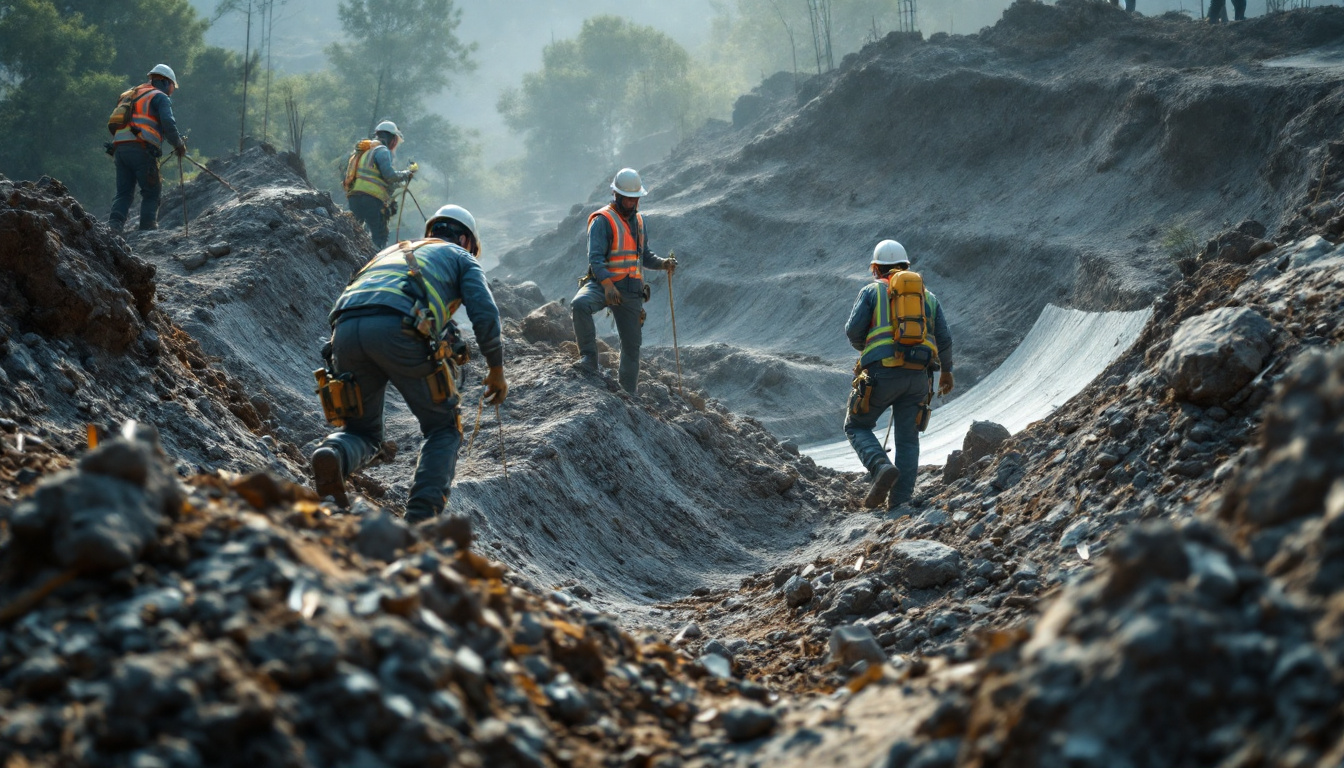Contour planning is an essential aspect of modern construction projects, influencing site design, project execution, and overall effectiveness. Properly implemented contour planning can lead to enhanced project efficiency, minimize risks, and foster sustainable practices. This article will delve into the intricacies of contour planning, exploring its definition, processes, benefits, challenges, and future trends, shedding light on its critical role in construction.
Understanding Contour Planning
Definition and Importance of Contour Planning
Contour planning refers to the process of analyzing and representing the physical features of a site, primarily focusing on its elevation and topography. This involves the creation of contour lines on a map to indicate different elevation levels, which is crucial in understanding how water drains, where to position structures, and how to manipulate the land for optimal use.
The importance of contour planning in construction projects cannot be overstated. It ensures that projects are not only viable but also sustainable and cost-effective. A well-executed contour plan can significantly reduce the risk of flooding, soil erosion, and other environmental challenges that can otherwise jeopardize construction timelines and budgets. Additionally, contour planning plays a vital role in land use planning, helping to preserve natural landscapes and ecosystems while accommodating development needs.
The Science Behind Contour Planning
The science of contour planning draws on various disciplines, including geography, civil engineering, and environmental science. Utilizing topographic surveys, professionals can gather data about a site’s elevation changes, soil composition, and drainage patterns. This information is paramount in making informed decisions about design and construction. By understanding the natural contours of the land, planners can create designs that harmonize with the environment, thereby minimizing the need for extensive grading and alteration of the landscape.
Furthermore, contour planning often employs specialized software and geographic information systems (GIS) for precise measurements and visualizations. These technologies enhance the planning process, allowing for the simulation of various scenarios that could affect the construction site throughout its lifecycle. For instance, planners can model how different rainfall patterns might influence water runoff and drainage, enabling them to devise effective solutions to manage stormwater. This proactive approach not only safeguards the construction site but also contributes to the overall resilience of the surrounding community against climate-related challenges.
The Process of Contour Planning in Construction
Initial Site Analysis
The first step in contour planning is conducting an initial site analysis. This analysis encompasses a thorough examination of the site’s physical characteristics, including its topography, existing vegetation, and surrounding infrastructure. Surveyors and environmental engineers typically lead this phase, using tools like total stations and leveling instruments to collect accurate data.
In addition to gathering physical data, a comprehensive site analysis also involves reviewing local regulations and zoning laws. Understanding these regulations helps construction teams adhere to legal requirements and avoid costly fines or project delays. Furthermore, this phase may include an assessment of environmental impact, where potential effects on local wildlife and ecosystems are evaluated, ensuring that the construction project aligns with sustainable practices and minimizes harm to the environment.
Creating the Contour Plan
Once the site analysis is complete, the next stage involves creating the contour plan. This plan is typically developed by landscape architects or civil engineers who translate survey data into a usable format. The contour lines are drawn to represent elevation changes, with each line connecting points of equal elevation.
Alongside the contour lines, the plan will often include other critical information such as soil types, drainage systems, and any existing structures. This comprehensive documentation is essential for ensuring that construction teams fully understand the topography and potential challenges before commencing work. Additionally, incorporating visual elements like color-coded elevation gradients can enhance the plan’s clarity, allowing stakeholders to quickly grasp the site’s characteristics and make informed decisions regarding construction methods and materials.
Implementing the Contour Plan
Implementing the contour plan in a construction project requires careful coordination among various stakeholders, including architects, engineers, and construction teams. All parties must be well-versed in the details of the contour plan to ensure accurate execution on the ground.
During the implementation phase, it’s vital to monitor the site continually. Adjustments may be necessary due to unforeseen challenges, such as weather changes or unexpected soil conditions. Continuous communication with all team members is critical in ensuring that the project adheres to the contours established in the original plan. Moreover, utilizing technology such as drones for aerial site surveys can provide real-time data, allowing for quick adjustments and enhancing the overall efficiency of the construction process. This proactive approach not only helps in maintaining the integrity of the contour plan but also fosters a collaborative environment where all team members can contribute to problem-solving as challenges arise.

Benefits of Contour Planning in Construction
Enhancing Project Efficiency
One of the primary benefits of contour planning is enhanced project efficiency. Detailed contour plans allow construction teams to strategize site work, manage resources better, and anticipate potential delays. By identifying optimal areas for construction early in the planning process, teams can streamline operations and minimize wasted time.
Furthermore, a well-designed contour plan helps facilitate the movement of machinery and manpower across the site. Projects can progress more smoothly with fewer delays and disruptions, ultimately adhering to timelines and budgets. This efficiency not only improves the workflow on-site but also enhances communication among team members, as everyone has a clear understanding of the layout and the tasks at hand. With a visual representation of the terrain, workers can quickly adapt to changes and make informed decisions, which is crucial in a dynamic construction environment.
Reducing Construction Risks
Contour planning also plays a vital role in mitigating risks associated with construction projects. By understanding the terrain’s elevation and natural drainage patterns, teams can avoid placing structures in flood-prone areas or regions susceptible to soil erosion.
Moreover, effective contour planning enables teams to incorporate appropriate engineering solutions, such as drainage systems and retaining walls, designed for the specific conditions of the site. These measures can significantly reduce the likelihood of costly rework or safety incidents during the construction phase. Additionally, contour planning allows for better environmental assessments, ensuring that construction practices align with local regulations and sustainability goals. By proactively addressing potential environmental impacts, teams can foster community goodwill and enhance the project’s reputation.
Cost Savings and Budget Management
With the efficiency enhancements and risk reductions that contour planning provides, it’s no surprise that it can also lead to substantial cost savings. By identifying the most suitable site areas for development, construction teams can prevent unnecessary expenditures related to land preparation and remedial work.
Additionally, incorporating contour planning into initial project budgets can lead to better overall financial management. Accurate predictions regarding materials, labor, and timelines allow project managers to allocate resources more effectively and adjust budgets accordingly. This foresight can also facilitate negotiations with suppliers and subcontractors, as teams can present a well-structured plan that outlines their needs and timelines. Furthermore, by minimizing unexpected costs, projects are more likely to stay within budget, allowing for potential reinvestment into other areas of the project or future developments. Click here to get why you need accurate contour plans for building permits.
Challenges in Contour Planning
Common Obstacles in Contour Planning
While contour planning offers numerous benefits, it is not without its challenges. One of the common obstacles faced is obtaining accurate and up-to-date data about the site. Various factors, such as changes in topography due to natural events or urban development, can lead to discrepancies in contour data. Moreover, seasonal variations, such as heavy rainfall or drought, can alter the landscape significantly, complicating the planning process further. This variability necessitates frequent updates to the data, which can be resource-intensive and time-consuming.

Additionally, the complexities of integrating contour plans with other project elements can pose difficulties. For instance, aligning the contour plan with architectural designs, utilities planning, and environmental considerations requires extensive collaboration and communication among different professionals. Each discipline may have its own set of standards and practices, which can lead to misunderstandings or conflicts if not managed properly. Furthermore, the need to comply with local regulations and zoning laws adds another layer of complexity, as these requirements can vary significantly from one location to another.
Overcoming Challenges in Contour Planning
To effectively overcome the challenges in contour planning, construction teams must prioritize thorough preparation and data verification. Engaging with experienced surveyors and utilizing advanced technological tools can improve data collection processes and accuracy. Technologies such as Geographic Information Systems (GIS) and drone surveying can provide real-time data and high-resolution imagery, allowing for a more precise understanding of the terrain. Additionally, incorporating predictive modeling can help anticipate potential changes in the landscape, enabling teams to adapt their plans proactively.
Collaboration is also crucial in overcoming integration issues. Regular meetings among architects, engineers, and construction teams can facilitate a mutual understanding of project goals and ensure that everyone is on the same page throughout the planning and execution stages. Establishing a shared digital platform for all stakeholders can streamline communication and document sharing, reducing the likelihood of errors. Moreover, fostering a culture of open dialogue encourages team members to voice concerns and suggest improvements, ultimately leading to a more cohesive and efficient contour planning process.

Future Trends in Contour Planning
Technological Advancements in Contour Planning
The future of contour planning is set to be shaped by ongoing technological advancements, particularly in the realms of artificial intelligence, machine learning, and remote sensing. These innovations can enhance the accuracy and efficiency of topographical surveys and contour mapping.
For example, drones equipped with LiDAR technology can capture detailed site data within a fraction of the time taken by traditional surveying methods. This enables construction teams to obtain up-to-date contour maps that reflect current site conditions, allowing for better-informed decisions.
Sustainable Practices in Contour Planning
Sustainability is becoming increasingly vital in the construction industry, and contour planning is no exception. Future trends are likely to focus on integrating sustainable practices into contour planning processes, such as utilizing environmentally friendly materials and methods that reduce the ecological impact of development.
Moreover, as the industry continues to prioritize green building initiatives, contour planning will evolve to include considerations for biodiversity, natural habitats, and environmental sustainability. By focusing on these aspects, construction projects can minimize their adverse impacts on the environment while maximizing their benefits to communities.
In conclusion, contour planning is an indispensable element of successful construction projects. By thoroughly understanding its definition, processes, benefits, challenges, and future trends, professionals can harness its full potential to lead projects to success while navigating the complexities of modern construction. The integration of advanced technologies and sustainable practices will play a crucial role in shaping the landscape of contour planning in the years to come.


